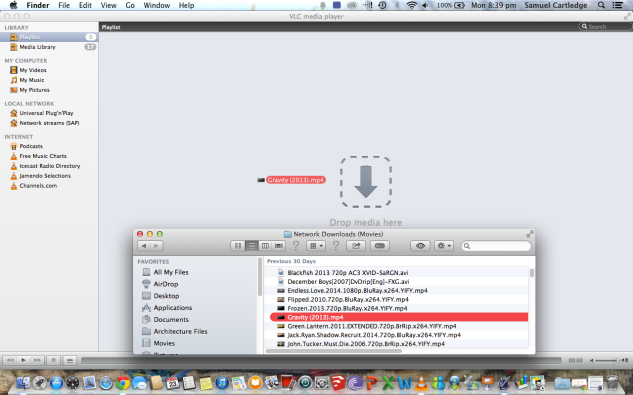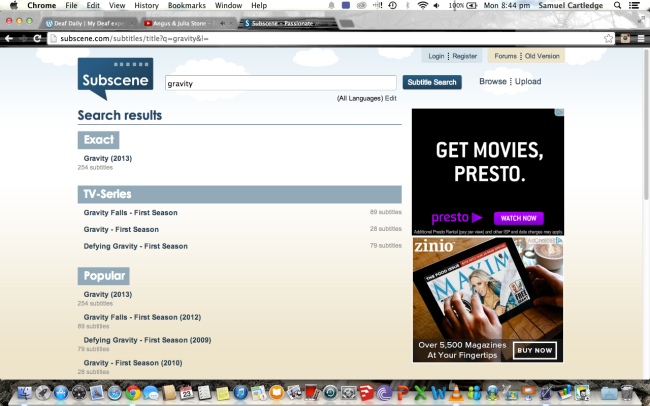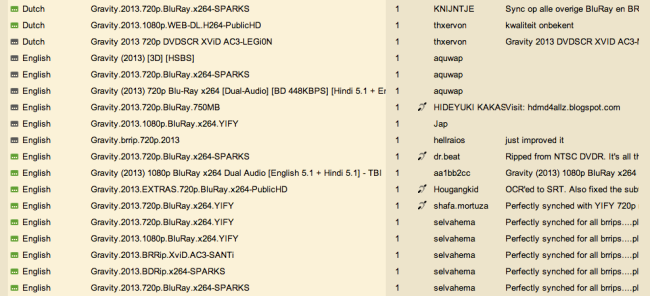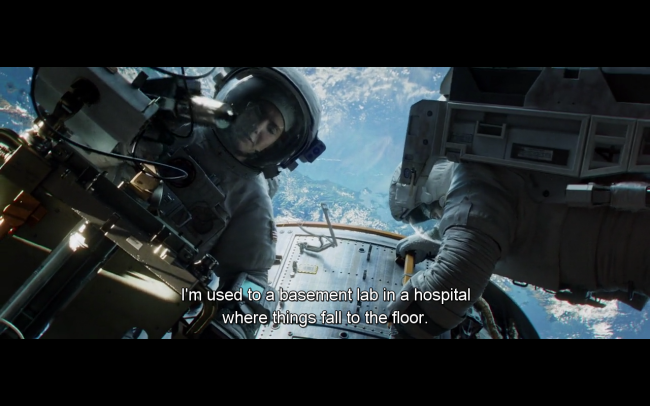As a human being we all love the entertainment of watching television shows and movies by ourselves or with friends and family. As Deaf people, we heavily rely on subtitles understand and interpret speech dialogue that we miss verbally through sound. What we really hate is when we have a movie or TV show file on our computer that we really want to watch but we keep putting it off because we know that it won’t contain subtitles. It’s the season finale of Game of Thrones yet you loathe thinking about watching it, not consuming the whole storyline, plot and of course, hearing, seeing and understanding all the jokes! Its just not the same for us without subtitles. It’s like a day without a sun for us, something that we have to inform our hearing counterparts of our need for subtitles so that we can experience the same level of enjoyment and satisfaction. I mean, who wants to witness the majestic scene of Leonidas from 300 bellowing mighty words that we cant understand or us mis-hearing what was said and interpreting it to be something totally out of context. THIS IS ARTHUR!!!!! Oh that’s why he kicked him down the well, his name was Arthur, totally makes sense. Maybe that was a bad example but you get what I mean, if you’re up for it and remember some embarrassing and funny phrases in movies or television shows that you totally got wrong because you couldn’t hear or couldn’t use subtitles, comment below for everyone to see.
Thankfully a few years ago I learnt how to get subtitles and add them to video files of movies and TV shows that I had and I was amazed at how easy it was. A friend explained it to me over facebook chat and at the time I thought, oh no here we go again another tech thing that I won’t be able to to do because I’m not Steve Jobs. Ever since I learnt how to add and sync subtitles to files, I have used it ever since, much to my extreme enjoyment and pleasure. So I want to pass this knowledge onto you and to do this I have created a very simple step by step guide.
1. First up, we need a media platform to run the multimedia file that you plan to watch. The best program on the planet for this is a nifty free to download program called VLC Player. This media player can play nearly every file type so it doesn’t matter if your file is MPEG-2, DivX, WMV, this program will play it! It can be downloaded at: http://www.videolan.org/vlc/index.html and has a mac and window version. Follow the prompts and install the program on you computer.
2. Once VLC player has downloaded and is open ready for use, all you have to do is click hold and drag the multimedia file onto the VLC Playlist which is the massive empty grey screen with the Drop media button in the middle.
 3. Once you have dropped the file onto the playlist it will start to play automatically. Awesome! Now to get some subtitles for the movie. Pause the movie and open up a web browser and go to http://www.subscene.com. Since I decided to watch Gravity, type the name of the movie in the search bar and click enter.
3. Once you have dropped the file onto the playlist it will start to play automatically. Awesome! Now to get some subtitles for the movie. Pause the movie and open up a web browser and go to http://www.subscene.com. Since I decided to watch Gravity, type the name of the movie in the search bar and click enter.
4. What the search has returned is a list of possible subtitles of films and television series that correspond with the searched phrase ‘Gravity’. Click on the relevant title which in this case is the first on the list.
This will now take you to another page with a massive list of subtitle files. Firstly on the left is the language the subtitles are for. Since we are looking for english, scroll down until we hit the english section. Great! So now what do we do? There’s so many to choose from!
5. I will explain to you the best way to choose and appropriate subtitle file to use. The Green icon at the front of the language means that the subtitles have been rated as good and light grey means that they haven’t been rated yet. This could mean that there could be content missing, it could be un-synced or it might not work. The ear icon with a line going through it states that the subtitle is catered for hearing impaired people. This means that not only the subtitles are included but other relevant information required for people who can’t hear to know, in order to help follow the story. This includes, song lyrics, different coloured text for when different people talk and also important noises such as; Door opens, Phone rings etc. The far right column are comments by the user who uploaded the file, usually used to advertise the sub.
My advice to choosing a subtitle track? scroll down and select the first relevant file that has a green icon and has your desired file type. Hearing impaired or not. Click on this link. Great, so this link takes you to another window where you can select to finally download the file. Also on this page may be comments that others have left either saying thanks or suggesting improvements or telling others how much they enjoyed it.
6. Now click Download English Subtitles. What you need to do now is unzip the file that you have downloaded off the net. So the file will be in downloads folder. Double click the file and it will automatically unzip. Click and drag this file onto the VLC player, just like we did with the movie file. Awesome! You’re all set. Click play and if you have done it right the subtitles should be playing through your movie.
My Tips and Advice:
- If the Multimedia file that you have is BluRay and nearly all high resolution movie files are these days, look for subtitles that are specifically for Bluray. If it doesn’t state in the description then look for the letters BR in the file name. Download these subtitles as they snap straight in sync without need for adjustment.
- If the subtitles are too early or too late, they can be adjusted whilst you are watching the movie using the H and J keys on the keyboard. The reason this happens is that some subtitle files are created to sync with different versions of the movie or TV show. Also advertisements take up time that isn’t accounted for. But don’t worry it is very easy to fix.
- Not all Movies and TV shows have subtitles. the more popular the show the more likely there will be a subtitle file. I have never had a movie with no subtitle files that I couldn’t find. Another website that acts in a similar way is www.opensubtitles.org
- Also, as some of you may know VLC has the option under the VLC tab > Extensions > VLsub. Through this you can set up an account and make VLC find the subtitle files for you via open subtitles however I prefer to search for my own subtitles so that I can choose from HI subtitles or normal ones.
I hope this step by step procedure helps you understand how easy it is to access subtitles on any multimedia file. If you have any questions feel free to comment or message me. Now time for me to catch up on the latest episode of Suits 😉







